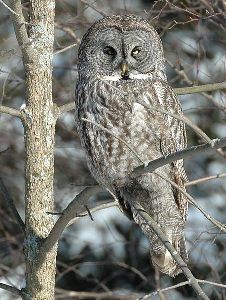 Canada is home to millions of migrating birds that return to our lakes and forests each spring to nest and reproduce, before returning south in the fall. Many birds of Canada are also year round residents, coping with our harsh winters and deep snow cover.
Canada is home to millions of migrating birds that return to our lakes and forests each spring to nest and reproduce, before returning south in the fall. Many birds of Canada are also year round residents, coping with our harsh winters and deep snow cover.
Complete list of Canadian birds
This list includes 426 recognized Canadian bird species. but a few new species may visit our country each year. The list does not include, for example, the Eurasian wigeon although they are increasingly frequent visitors to our lakes. This page makes a great checklist for the ambitious bird watcher! Read more
Endangered Birds in Canada (COSEWIC)
The Committee on the Status of Endangered Wildlife in Canada (COSEWIC) meets at least once a year to assess the status of wildlife species. Since 2004, COSEWIC submits its annual report to the federal Minister of the Environment in late summer. The annual report includes all assessment results for wildlife species that have been assessed, and the birds listed on this page are updated annually. Read more
Owls In Canada
Everyone loves these elusive nocturnal hunters, so we’ve added a page with information and photos on all sixteen Canadian owl species. Read more
Winter Birds In Canada
Birdwatchers are people who enjoy a challenge, and birding Canada in the winter definitely qualifies! Birds may be few and far between in places, but the joy of spotting one after trudging through the snow for hours is more than worth the effort. For those hardy birders who want to tackle Canada in the winter, we’ve prepared a list of birds that huddle through our northern climate. Read more
Bird Migration
Canada is home to millions of migrating birds that return to our lakes and forests each spring to nest and reproduce, before returning south in the fall. Approximately 327 bird species regularly occur in the Boreal Forest– that’s nearly 50% of the species found in the U.S. and Canada. Read more
How Do Birds Know When To Migrate?
In the spring, the pre-migratory state is characterized by a change in neural centers in the lower part of the brain controlling hunger so that the bird gains weight by overeating. This increased energy income, as much as 40% more than during other times of the year, is stored as large fat deposits under the skin, in flight muscles, and in the abdominal cavity. Small perching birds like sparrows and warblers gain about 1 to 1.5 g per day, and this increased appetite continues over a period of about two weeks prior to migration. Read more



Hi there,
I wouldn’t call myself a bird enthusiast, but I would really like to see the bird (identify it) making this crazy song in the evening here in Burnaby, BC. It seems nearly impossible to find a bird based on knowing the song alone, or even a description of the song, but here goes. The song has maybe 4-7 notes raising in pitch with an echoey finish. Your thoughts?
PH
I have been feeding backyard birds for years and this past winter in the area south of Fairview, Alberta, we have now red birds. There are no purple finches, red polls, pine grosbeaks or anything with some red except wood peckers.
Seems odd to me! My sister in law has the same thing just out of Fort St. John.
Steve